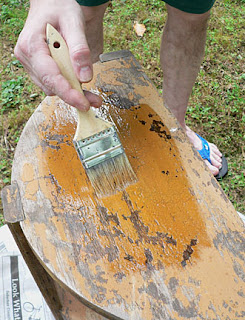 QUESTION: My father used to fly a lot on business, and each time he flew somewhere, he’d keep a souvenir of that flight. Sometimes it was just a timetable or a ticket jacket, but at other times, he’d bring home a cup or a silver spoon or a menu with the logo of the airline on it. Are these items worth collecting?
QUESTION: My father used to fly a lot on business, and each time he flew somewhere, he’d keep a souvenir of that flight. Sometimes it was just a timetable or a ticket jacket, but at other times, he’d bring home a cup or a silver spoon or a menu with the logo of the airline on it. Are these items worth collecting?ANSWER: People who traveled by plane, especially internationally, during the 1930s to the 1970s often kept a souvenir of their flights, including decks of playing cards, flight wings, timetables, postcards, flight bags, silverware and dishes. During that era, flights served full meals to all passengers, not just those in First Class. To fly anywhere was a special experience. People dressed up in their Sunday best and expected to dine on fine china using silver flatware on most flights.
There are lots of collectors of airline memorabilia out there. Propelled by personal memories and an eternal fascination with flying, these collectors seek the well-crafted and designed implements used on those mid-20th-century flights. And when some airlines like Eastern and Pan Am came upon hard times in the late 1980s, the market for airline dinner and silverware became speculative. Some, like Pan Am, were in operation from the early days of commercial aviation in 1927 to its shut down in 1991.
Airline collectibles consist of a wide variety of items, including timetables, crew wings, safety cards, barf bags, trays, liquor miniatures, plasticware, swizzle sticks, playing cards, safety cards, seat occupied cards, inflight magazines, overnight kits, flight bags, soap, hat badges, patches, buttons, service pins, hats, uniforms, ticket jackets, boarding passes, annual reports, posters, brochures, ashtrays, pins, badges, toy and model planes, advertisements, games, watches and coloring books. Collectors particularly covet china, glassware, silverplate, flatware, salt and pepper shakers, and menus bearing the airline’s name or logo. Also, the older the item, the more valuable. Likewise, the more renowned or limited the airline's history, the more collectors are interested in them.
Some airlines first began serving meals on board aircraft about 1930. But the earliest marked china which they used dates from the mid 1930's. Generally, any china pieces from before WWII are rare and highly sought after by collectors. Prices likewise reflect the rarity and some pieces from that era are nearly $1,000. Not only are these pieces valuable because of their age, but also due to their scarcity. Today's airlines have fleets of several hundred planes each carrying a hundred or more passengers, but in the 1930's even the majors had only maybe a couple dozen planes each holding a few dozen passengers.
American and PanAm had some of the earliest examples of nicely marked china. PanAm flew its famous Flying Clippers across the Pacific, so the china used on them is quite rare. Most of the early china was very lightweight so as to not overload the planes, but there are several exceptions with both American and PanAm.
While the postwar era found most of the larger airlines, both domestic and foreign, having china, some of the smaller carriers didn’t start using it until the jet era. Both Delta and Continental, for example, used plastic dishes in the prop era.
The early jet era was undoubtedly the Golden Age of fine airline china. Each carrier competed with the others for speed and service. The service often included luxury dishes like steak or lobster. Many of the small foreign carriers got their first china on their first jets.
Airline dinnerware is probably the most commonly found collectible at the airline memorabilia shows, and the variety is often astounding.
Much of the china seen at the shows comes from legitimate sources. When airlines change their logo or their china design, they sell off the older material or give it to their employees. Depending on the quality, quantity and condition of these items, they may have value perhaps in the hundreds or the thousands. Those airlines who also fly internationally use different china on those flights. China used by foreign airlines is often made by the best manufacturers—Wedgewood, Spode, Royal Doulton, and Noritake. Generally any pre-World War II china pieces are rare and highly sought after. Prices likewise reflect that rarity and some pieces sell for nearly $1,000.





































